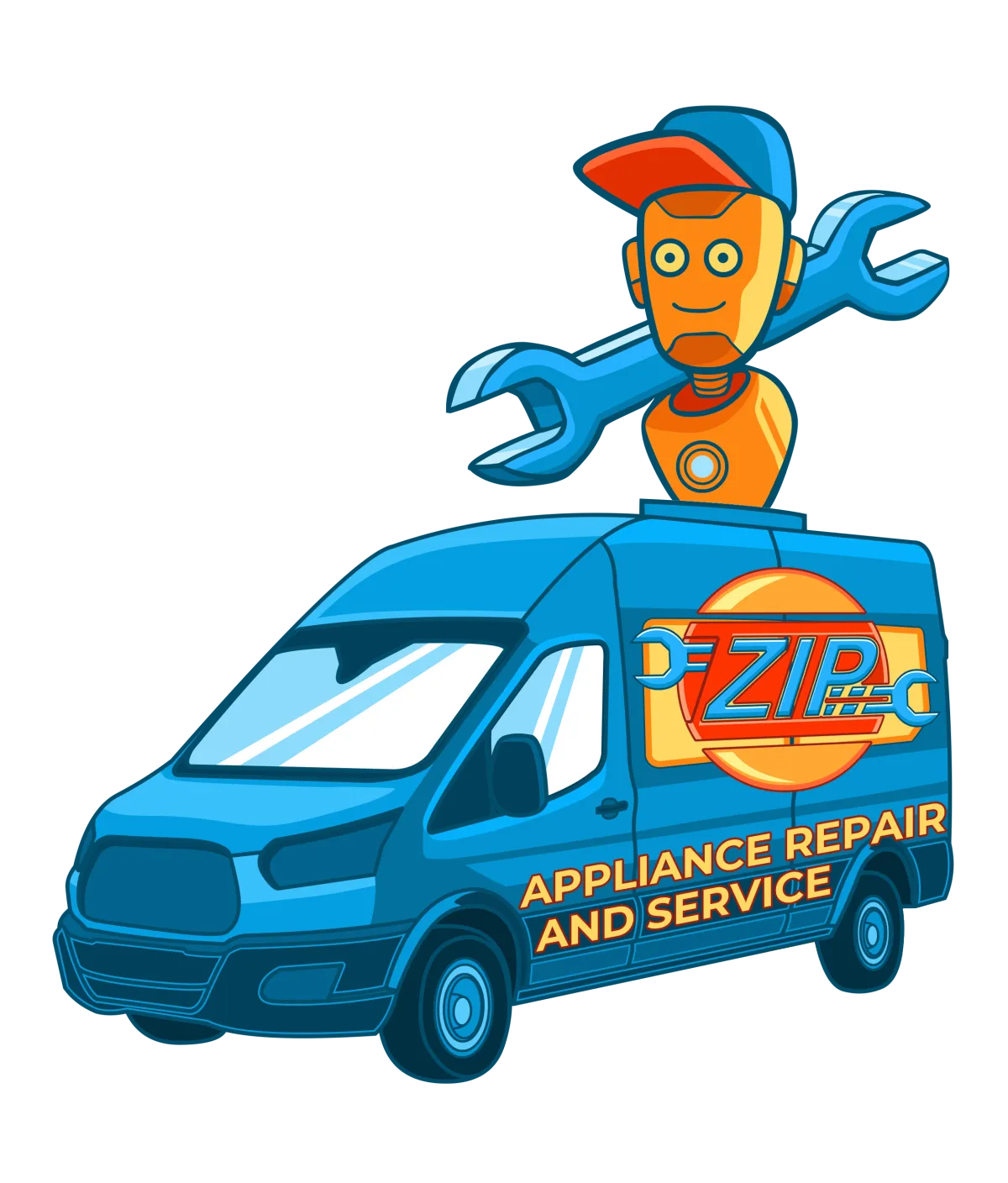Phone: (559) 272-4265
Appliance Repair Tips For Bakersfield, CA Residents

Spin Cycle Stalling? Fix Your GE Washer Today!
“Conquer the spin cycle stalling with confidence - because a little troubleshooting today means smooth laundry days ahead.” - Appliance Boss
Introduction:
Welcome readers to the guide on troubleshooting spin cycle issues with GE washers. If you've ever experienced the frustration of a washer that refuses to spin, you know how disruptive it can be to your laundry routine. In this comprehensive guide, we'll delve into the common causes of spin cycle stalling and provide practical solutions to get your GE washer back on track. Let's dive in.
Understanding the Spin Cycle: The spin cycle in a washing machine serves a crucial purpose: to remove excess water from your laundry before the drying process. When functioning correctly, the spin cycle leaves your clothes damp rather than soaking wet, reducing drying time and energy consumption. However, a stalling spin cycle can manifest in various ways, including the washer failing to spin altogether or stopping mid-cycle. This issue may stem from mechanical or electrical malfunctions within the washer.

Preparation: Before embarking on any troubleshooting or repair tasks, it's essential to gather the necessary tools and materials. These may include a screwdriver, pliers, multimeter, and replacement parts if needed. Additionally, always prioritize safety by unplugging the washer from the power source and, if possible, turning off the water supply before inspection.
Basic Troubleshooting Steps: Start by checking for unbalanced loads, which can disrupt the spin cycle. If necessary, redistribute the clothes evenly in the drum to ensure balanced weight distribution. Next, verify that the washer is level by adjusting its feet as needed. An uneven washer can lead to excessive vibration during the spin cycle, causing it to stall or stop prematurely. Finally, inspect the power source to ensure the washer is receiving electricity. A tripped circuit breaker or faulty outlet could be the culprit behind a non-spinning washer.
Inspecting Components: To pinpoint the cause of spin cycle stalling, it's crucial to inspect the various components of the washer thoroughly. Common culprits include the drive belt, motor, and pulley system. Begin by visually inspecting these components for signs of wear or damage. Then, follow step-by-step instructions to test each component using a multimeter, which measures electrical continuity and resistance. Look out for warning signs such as frayed belts, burnt motor smells, or unusual noises during operation, as these may indicate a specific part needs replacement.
Cleaning and Maintenance: Regular cleaning and maintenance are key to preventing spin cycle problems and extending the lifespan of your GE washer. Focus on cleaning the drain pump, lint filter, and other critical parts regularly to remove debris and buildup that can impede performance. Additionally, incorporate maintenance tasks such as inspecting hoses for leaks and cleaning the exterior of the washer to keep it in optimal condition over time.
Advanced Troubleshooting Techniques: For more complex spin cycle issues, such as problems with the control board or timer, advanced troubleshooting techniques may be necessary. These electronic components regulate the washer's functions and can malfunction due to electrical surges or component failure. Learn how to diagnose and address these issues using specialized tools and techniques, or consider seeking assistance from a professional technician if you're unsure.
DIY Repair Solutions: Many spin cycle problems can be resolved with DIY repair solutions, saving you time and money on professional services. From replacing a worn drive belt to troubleshooting motor issues, we'll provide detailed instructions accompanied by illustrations or videos where applicable. By following these step-by-step guides, you can confidently tackle simple repairs yourself and restore your GE washer to working order.
Seeking Professional Assistance: While DIY repairs are often effective, there are times when it's best to enlist the help of a professional technician. If you encounter complex issues beyond your expertise or lack the necessary tools for repair, don't hesitate to reach out to a reputable appliance repair service. We'll provide tips for finding qualified technicians and discuss the potential costs associated with professional repairs, helping you make an informed decision.

Preventive Measures: To avoid future spin cycle issues, we'll share preventive measures to keep your GE washer running smoothly. This includes recommending regular maintenance tasks such as cleaning the detergent dispenser and inspecting hoses for leaks. Additionally, we'll stress the importance of addressing minor issues promptly to prevent them from escalating into more significant problems down the line.
Conclusion: In conclusion, addressing spin cycle stalling is essential for maintaining the efficiency and longevity of your GE washer. By following the troubleshooting steps outlined in this guide, you can identify and resolve common issues with confidence. Whether you opt for DIY repairs or seek professional assistance, taking prompt action is key to getting your washer spinning smoothly again.
Remember, at Zip Appliance and Plumbing Repair, we're here to help you with all your appliance repair needs. Visit our website at www.ziprepairservice.com or give us a call at (661) 387-2282 to schedule a service appointment. Don't let spin cycle problems derail your laundry routine – tackle them head-on and enjoy hassle-free washing for years to come.

Spin Cycle Stalling? Fix Your GE Washer Today!
“Conquer the spin cycle stalling with confidence - because a little troubleshooting today means smooth laundry days ahead.” - Appliance Boss
Introduction:
Welcome readers to the guide on troubleshooting spin cycle issues with GE washers. If you've ever experienced the frustration of a washer that refuses to spin, you know how disruptive it can be to your laundry routine. In this comprehensive guide, we'll delve into the common causes of spin cycle stalling and provide practical solutions to get your GE washer back on track. Let's dive in.
Understanding the Spin Cycle: The spin cycle in a washing machine serves a crucial purpose: to remove excess water from your laundry before the drying process. When functioning correctly, the spin cycle leaves your clothes damp rather than soaking wet, reducing drying time and energy consumption. However, a stalling spin cycle can manifest in various ways, including the washer failing to spin altogether or stopping mid-cycle. This issue may stem from mechanical or electrical malfunctions within the washer.

Preparation: Before embarking on any troubleshooting or repair tasks, it's essential to gather the necessary tools and materials. These may include a screwdriver, pliers, multimeter, and replacement parts if needed. Additionally, always prioritize safety by unplugging the washer from the power source and, if possible, turning off the water supply before inspection.
Basic Troubleshooting Steps: Start by checking for unbalanced loads, which can disrupt the spin cycle. If necessary, redistribute the clothes evenly in the drum to ensure balanced weight distribution. Next, verify that the washer is level by adjusting its feet as needed. An uneven washer can lead to excessive vibration during the spin cycle, causing it to stall or stop prematurely. Finally, inspect the power source to ensure the washer is receiving electricity. A tripped circuit breaker or faulty outlet could be the culprit behind a non-spinning washer.
Inspecting Components: To pinpoint the cause of spin cycle stalling, it's crucial to inspect the various components of the washer thoroughly. Common culprits include the drive belt, motor, and pulley system. Begin by visually inspecting these components for signs of wear or damage. Then, follow step-by-step instructions to test each component using a multimeter, which measures electrical continuity and resistance. Look out for warning signs such as frayed belts, burnt motor smells, or unusual noises during operation, as these may indicate a specific part needs replacement.
Cleaning and Maintenance: Regular cleaning and maintenance are key to preventing spin cycle problems and extending the lifespan of your GE washer. Focus on cleaning the drain pump, lint filter, and other critical parts regularly to remove debris and buildup that can impede performance. Additionally, incorporate maintenance tasks such as inspecting hoses for leaks and cleaning the exterior of the washer to keep it in optimal condition over time.
Advanced Troubleshooting Techniques: For more complex spin cycle issues, such as problems with the control board or timer, advanced troubleshooting techniques may be necessary. These electronic components regulate the washer's functions and can malfunction due to electrical surges or component failure. Learn how to diagnose and address these issues using specialized tools and techniques, or consider seeking assistance from a professional technician if you're unsure.
DIY Repair Solutions: Many spin cycle problems can be resolved with DIY repair solutions, saving you time and money on professional services. From replacing a worn drive belt to troubleshooting motor issues, we'll provide detailed instructions accompanied by illustrations or videos where applicable. By following these step-by-step guides, you can confidently tackle simple repairs yourself and restore your GE washer to working order.
Seeking Professional Assistance: While DIY repairs are often effective, there are times when it's best to enlist the help of a professional technician. If you encounter complex issues beyond your expertise or lack the necessary tools for repair, don't hesitate to reach out to a reputable appliance repair service. We'll provide tips for finding qualified technicians and discuss the potential costs associated with professional repairs, helping you make an informed decision.

Preventive Measures: To avoid future spin cycle issues, we'll share preventive measures to keep your GE washer running smoothly. This includes recommending regular maintenance tasks such as cleaning the detergent dispenser and inspecting hoses for leaks. Additionally, we'll stress the importance of addressing minor issues promptly to prevent them from escalating into more significant problems down the line.
Conclusion: In conclusion, addressing spin cycle stalling is essential for maintaining the efficiency and longevity of your GE washer. By following the troubleshooting steps outlined in this guide, you can identify and resolve common issues with confidence. Whether you opt for DIY repairs or seek professional assistance, taking prompt action is key to getting your washer spinning smoothly again.
Remember, at Zip Appliance and Plumbing Repair, we're here to help you with all your appliance repair needs. Visit our website at www.ziprepairservice.com or give us a call at (661) 387-2282 to schedule a service appointment. Don't let spin cycle problems derail your laundry routine – tackle them head-on and enjoy hassle-free washing for years to come.
If your dryer has been giving you problems, contact Zip Appliance Repair & Service at (661) 387-2282

Appliance Repair In A Zip
If you need a dryer repair call our Team at (661) 387-2282, or visit our online scheduling page to request service.
Appliance Repair
Plumbing Repair Services
HAVE A QUESTION, CALL (661) 387-2282

Online Offers
Take advantage of our online discount offers - save time and money...

Residential & Commercial appliances
See what our company can do for you

Appliance Repair Tips
If your appliance is not working properly...

1405 Commercial Way ste 100
Bakersfield, CA 93309
Lic # 1116346
Equipment We Sevice
- A Call To Confirm Your Appointment Time
- A Email Detailing Your Assigned Technician
- Information Needed Before The Repair Can Be Started
- An Estimate Of Work To Be Done
© 2025 ZIP APPLIANCE REPAIR & SERVICE LLC








